The mid-size and maxi classifications of horizontal direction drilling (HDD) machines are the largest and most powerful rotation units designed for daily use to bore the longest, deepest and largest diameter bores. Thrust and pullback of the biggest maxi units can be 1,100,000 lb. (500 tonnes) or more, with torque capabilities of 100,000 ft. lb. (136,000 Nm) or greater. World-class record runs for maxi machines exceed 2 miles (3.2 km) installing pipe 18 inches (460 mm) in diameter.
Productivity and reliability with minimal downtime and lowest cost of ownership of these machines for the most part simply requires following the manufacturer’s prescribed maintenance routines. “We go through the maintenance manual with a new owner at every start up,” said Tim Slarb, an HDD fluid system field technician for 13 years with American Augers. “We point out the maintenance routines and emphasize the importance of following them. Owners who adhere to the recommended practices can expect long, trouble-free service life.” Slarb said he knows of owners who have been drilling hard with their machines for over 30 years. “It would be interesting to know the total hours they have on their rigs, but over the decades they’ve lost track. They just know their trusty rig starts up for them and gets the job done, each and every time they need it. That’s because they’ve cared for their machine.”
A maxi rig’s capabilities can lull operators into taking them for granted. They may start cutting corners on their normal maintenance routines. Slarb said, “It’s a shame because their maintenance is not really that timely or expensive – especially compared to downtime loss of productivity and the cost of repair when maintenance items are neglected.” One of the most common causes for downtime and repair is ignoring proper greasing. “Grease is cheap. We try to reinforce that when we instruct the drilling crews – more grease and more grease – and more grease.”
Slarb advised rig owners to keep the fluid swivels and slip spindle properly lubricated. The slip spindle must be free to move to keep pressure off the pipe threads. Failure to grease the slip spindle not only causes premature wearing of splines in the shaft but can result in damage to pipe. “Some drillers see thread damage and don’t immediately recognize its relationship to insufficient slip spindle lubrication.” Failure to keep a bearing lubricated can also result in an expensive repair. “When a bearing is shot, you’re looking at a pretty significant rebuild.”
Other than daily greasing, Slarb said a maxi rig doesn’t have many components with firmly established service intervals. This makes a greasing routine additionally beneficial. “We instruct HDD crews to keep their eyes open as they’re going around the rig,” Slarb said. He described it as an inspection opportunity similar to the pre-flighting pilots do before they climb into a plane. “They can visually identify such things as loose nuts or bolts and monitor the condition of component wear points.”
Diligent monitoring of the rig’s components enables owners to schedule service ahead of time, before part failure, eliminating preventable downtime and lowering overall cost of ownership. “Keep an eye on hydraulic components, the rotary box and bearing end play before it’s out of tolerance. Noticing something that will need service soon means you can order parts in advance to have them ready and schedule the repair between jobs – instead of addressing the issue in the middle of one.”
One routine maintenance item that does have a manufacturer-specified service interval is changing out hydraulic filters, a root cause of some expensive repairs. “The heart of these machines is their hydraulics. You don’t want to forget that. Change the filters out as specified in the service manual.” Slarb described a repair call for a customer who had run its new rig only a couple thousand hours. The field technician sent to troubleshoot the problem discovered the rig’s hydraulic filters had disintegrated. Filter material had corrupted the hydraulic fluid, causing damage throughout the hydraulic system. Slarb said, “The tech’s first question to the owner was, ‘How often do you change the filters?’ The owner told him he had never changed them since he bought the rig.”
Even with so much damage, the rig was repairable, a tribute to just how robust these machines are. However, it meant flushing out the hydraulic circuits and inspecting and repairing the motors and pumps. The cost of making these repairs on any given rig can total tens of thousands of dollars. Slarb said, “Oh, we can do a lot for a rig. We can almost always bring it right back to OEM specs, no problem – but how much do you really want us to be fixing something so easy and so inexpensive to maintain? Follow the service manual, you’ll keep your rig in the field making money for you, not in our shop ringing up a tab for preventable component failures.”
Slarb said since almost all a maxi rig’s components are rebuildable or replaceable, they have remarkable longevity. Yet recently there has been a growing trend for owners to sell or trade in their older rigs for new models. “Lately we’re seeing more projects specifying Tier 4 Final compliance. Some won’t let maxi rigs with pre-Tier 4 engines on their jobs.” From an engineering point, Slarb said, a legacy rig could be upgraded with a Tier 4-compliant engine and the latest electronics packages. “But when you’re looking at the expense of retrofitting an engine to an older machine,” he said, “it makes more sense to most owners just to invest in a new rig altogether.”
Newer rig or older, Slarb said the best way to ensure it’s paying you back for your investment is to follow the manufacturer’s maintenance routines.
If your rig needs more than just the normal maintenance contact our Service Team.

